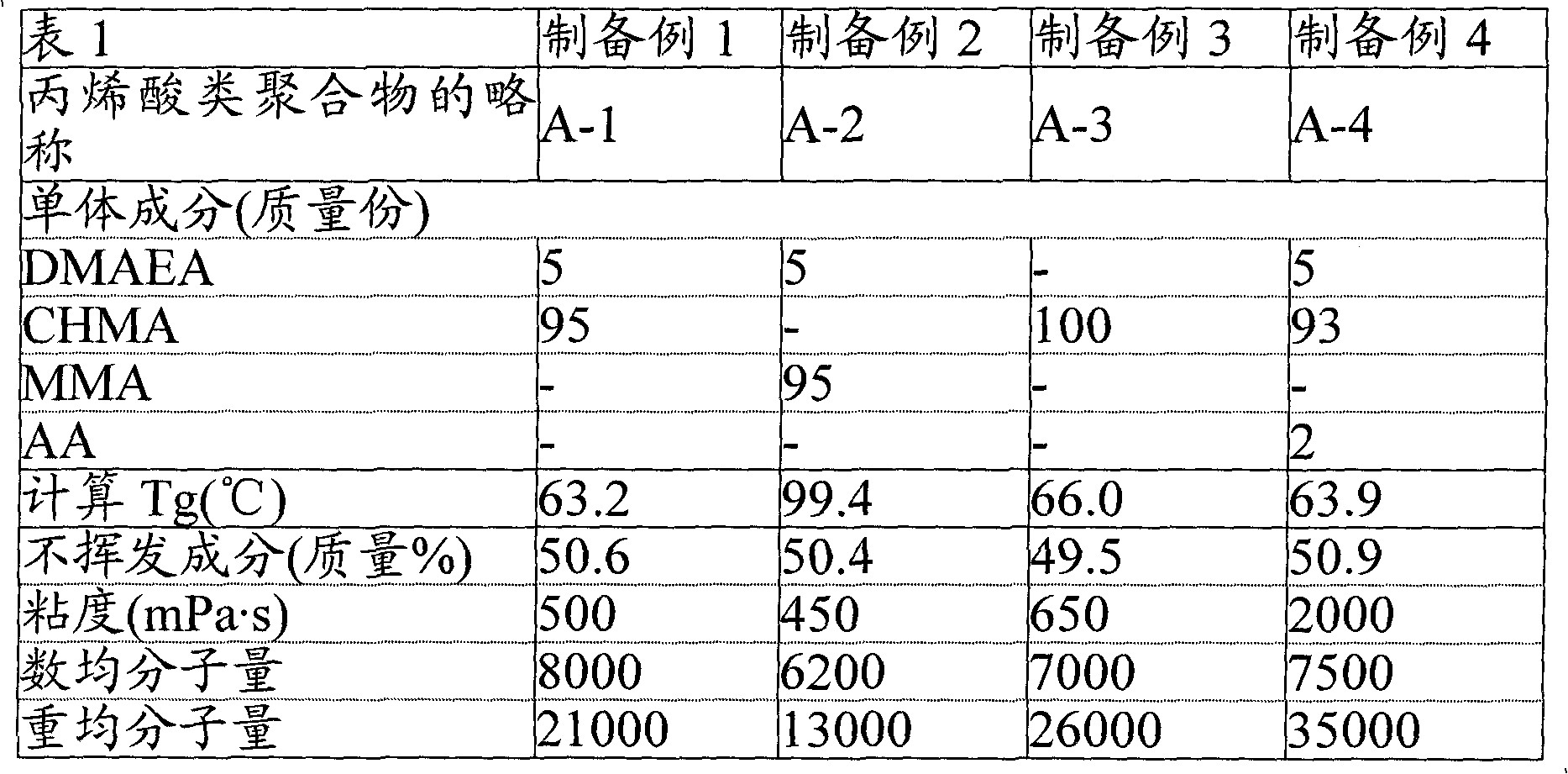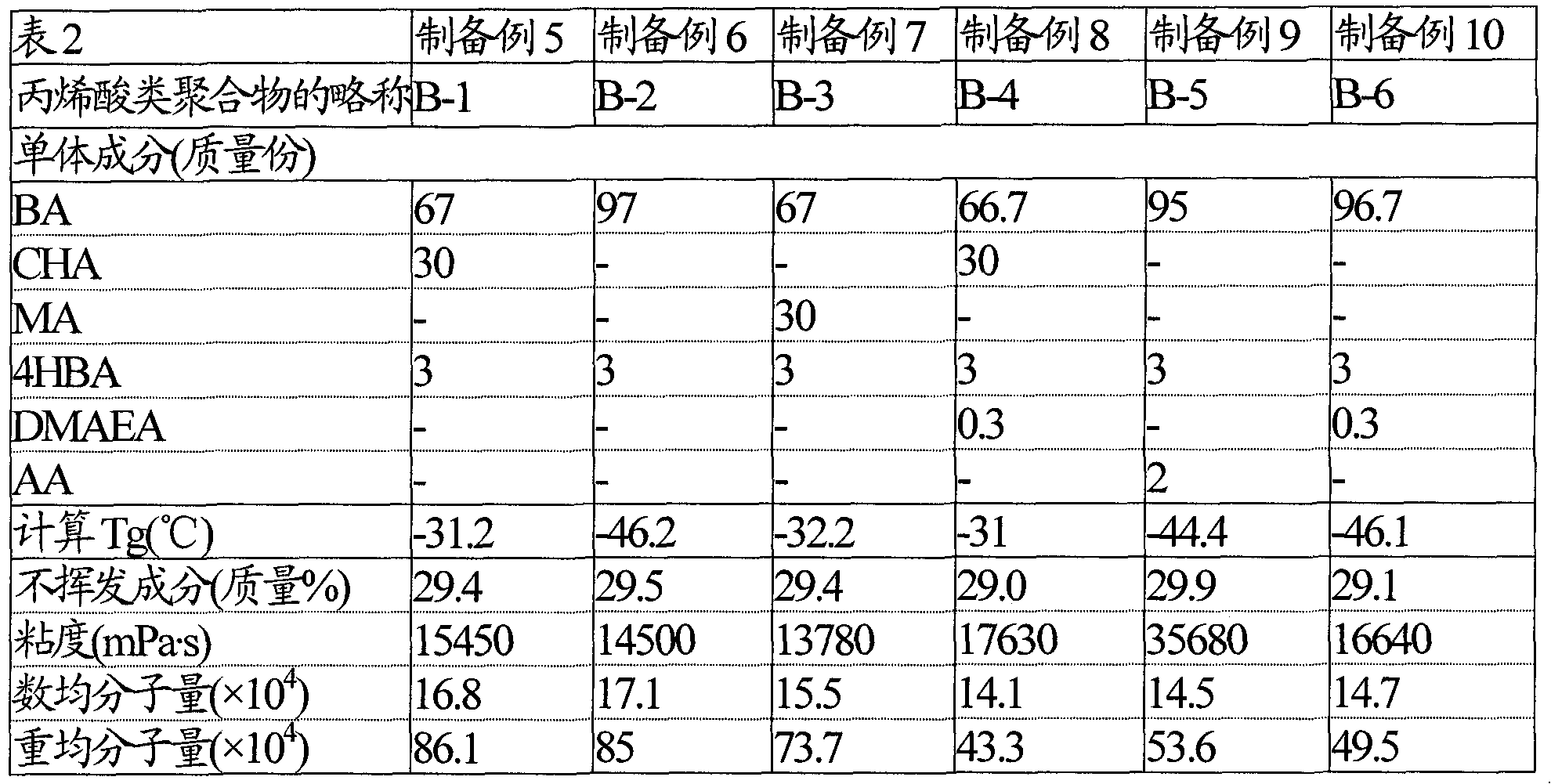Adhesive, adhesive sheet using the same and method for producing adhesive sheet
A technology of adhesives and adhesive sheets, applied in the direction of adhesive types, ester copolymer adhesives, film/sheet adhesives, etc. Adhesion retention, the inability to optimize the curved surface of the base material, etc., to achieve the effect of preventing corrosion
- Summary
- Abstract
- Description
- Claims
- Application Information
AI Technical Summary
Problems solved by technology
Method used
Image
Examples
Embodiment
[0083] Hereinafter, the present invention will be described more specifically by way of examples and comparative examples.
[0084] [Preparation of Acrylic Polymer]
preparation example 1
[0086] 35 parts by mass of toluene were charged into a reaction container equipped with a stirrer, a thermometer, a reflux cooling pipe, and a dropping funnel, and heated to a temperature of 90°C.
[0087] Next, premix 1 containing 95 parts by mass of cyclohexyl methacrylate and 5 parts by mass of N,N-dimethylaminoethyl acrylate, and 2 parts by mass of azobisisobutyronitrile as a polymerization initiator and Premix 2 with 50 parts by mass of toluene was added dropwise into the reaction container. The dropwise addition of the premix 1 was carried out for 6 hours, and the dropwise addition of the premix 2 was carried out for 6.5 hours.
[0088] After completion|finish of said dripping, the reaction liquid obtained by further heating at the same temperature for 2 hours was mixed with toluene, and the nonvolatile matter was 50.6 mass % of acrylic polymer (A-1) solutions.
preparation example 2
[0090] 35 parts by mass of toluene were charged into a reaction container equipped with a stirrer, a thermometer, a reflux cooling pipe, and a dropping funnel, and heated to a temperature of 90°C.
[0091] Next, premix 3 containing 95 parts by mass of methyl methacrylate and 5 parts by mass of N,N-dimethylaminoethyl acrylate, and 2 parts by mass of azobisisobutyronitrile as a polymerization initiator and toluene 50 parts by mass of premix 4 were added dropwise into the reaction container. The dropwise addition of the premix 3 was carried out for 6 hours, and the dropwise addition of the premix 4 was carried out for 6.5 hours.
[0092] After completion|finish of said dripping, the reaction liquid obtained by further heating at the same temperature for 2 hours was mixed with toluene, and the nonvolatile matter was 50.4 mass % of acrylic polymer (A-2) solutions.
PUM
| Property | Measurement | Unit |
|---|---|---|
| glass transition temperature | aaaaa | aaaaa |
| glass transition temperature | aaaaa | aaaaa |
| peel strength | aaaaa | aaaaa |
Abstract
Description
Claims
Application Information
 Login to View More
Login to View More - R&D
- Intellectual Property
- Life Sciences
- Materials
- Tech Scout
- Unparalleled Data Quality
- Higher Quality Content
- 60% Fewer Hallucinations
Browse by: Latest US Patents, China's latest patents, Technical Efficacy Thesaurus, Application Domain, Technology Topic, Popular Technical Reports.
© 2025 PatSnap. All rights reserved.Legal|Privacy policy|Modern Slavery Act Transparency Statement|Sitemap|About US| Contact US: help@patsnap.com


